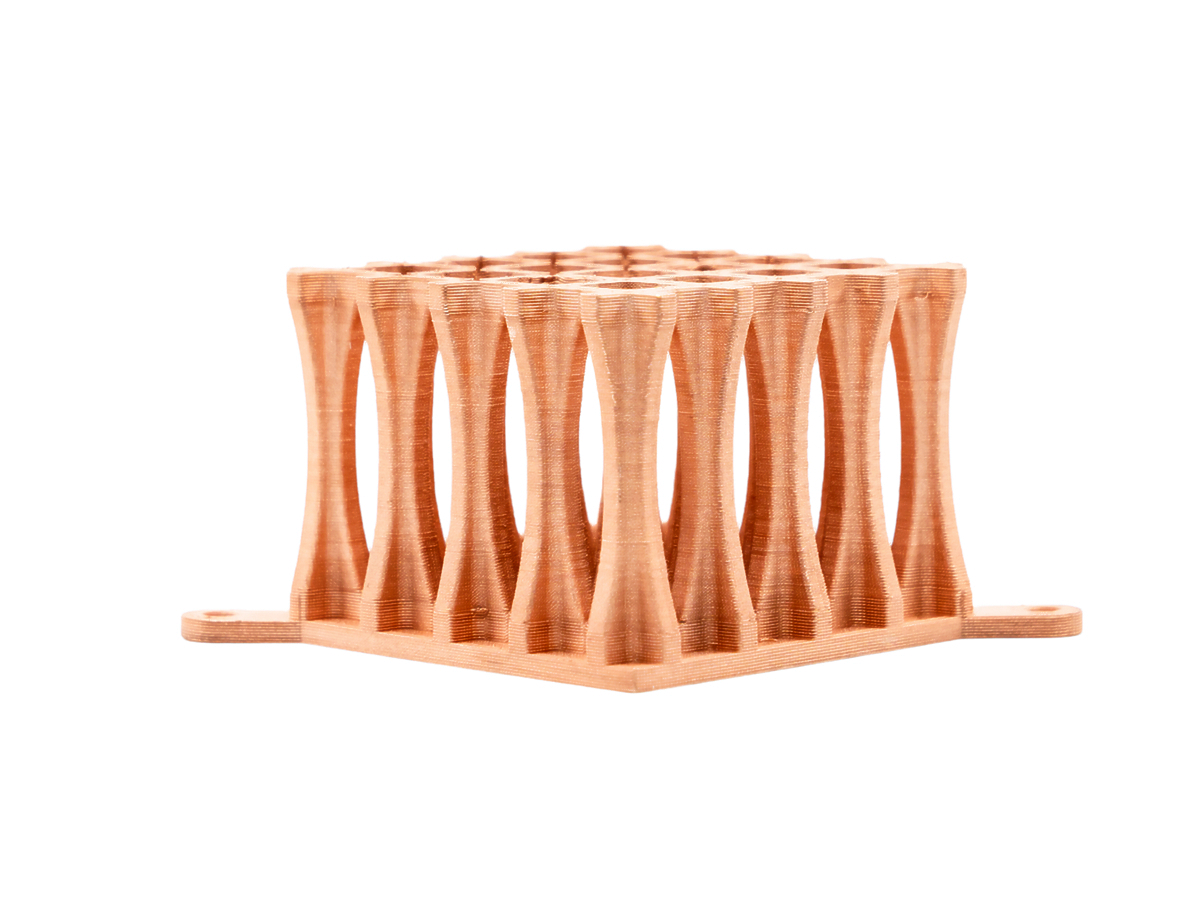Stronger and More Efficient: Custom Copper Molds and Inserts for Manufacturing and Tooling
Introduction
Copper 3D printing is transforming the manufacturing and tooling industry by enabling the production of custom molds and inserts with superior thermal conductivity and mechanical durability. Using advanced metal 3D printing technologies like Selective Laser Melting (SLM) and Direct Metal Laser Sintering (DMLS), premium copper alloys such as Copper C18150 and GRCop-42 provide exceptional heat transfer properties, ensuring faster cooling cycles, longer tool life, and greater production efficiency.
Compared to conventional machining or casting, copper 3D printing for molds and inserts allows for integrated conformal cooling channels, complex geometries, and rapid tooling manufacturing optimized for high-volume production.
Applicable Material Matrix
Material | Thermal Conductivity (W/m·K) | Tensile Strength (MPa) | Hardness (HV) | Purity or Alloy | Tooling Application Suitability |
|---|---|---|---|---|---|
300–320 | 450 | 130–150 | Cu-Cr-Zr Alloy | Injection molds, die casting inserts | |
275–300 | 350 | 120–140 | Cu-Cr-Nb Alloy | High-temp tooling | |
390–400 | 220 | 50–70 | 99.99% Pure Copper | Heat exchangers, thermal plates | |
380–390 | 210 | 50–70 | 99.90% Pure Copper | General cooling inserts | |
200–220 | 600 | 160–180 | Cu-Ni-Si-Cr Alloy | Corrosion-resistant tooling |
Material Selection Guide
Copper C18150 (CuCr1Zr): Combining excellent thermal conductivity (~300 W/m·K) with high strength and hardness after heat treatment, C18150 is the industry standard for high-performance injection molding and die-casting inserts with conformal cooling.
GRCop-42: Originally developed for aerospace, GRCop-42 provides good strength at elevated temperatures, making it ideal for tooling subjected to thermal cycling in high-temperature production environments.
Copper C101: Ultra-pure copper with maximum thermal conductivity, C101 is suitable for applications where exceptional heat dissipation is critical, such as cooling plates and thermal cores.
Copper C110: Economical, high-conductivity material used for moderate-duty cooling inserts and thermal plates in tooling where extremely high mechanical loads are not required.
CuNi2SiCr: With high tensile strength (~600 MPa) and good corrosion resistance, CuNi2SiCr is used for tooling operating in aggressive environments or requiring additional mechanical durability.
Process Performance Matrix
Attribute | Copper 3D Printing Performance |
|---|---|
Dimensional Accuracy | ±0.05 mm |
Density | >99.5% Theoretical Density |
Layer Thickness | 30–60 μm |
Surface Roughness (As-Printed) | Ra 5–12 μm |
Minimum Feature Size | 0.3–0.5 mm |
Process Selection Guide
Conformal Cooling Channel Integration: Copper 3D printing enables precise internal cooling geometries, dramatically improving cooling efficiency and reducing cycle times by 20–40%.
Superior Thermal Management: Materials like C18150 deliver outstanding thermal conductivity to prevent hot spots, extend tool life, and improve molded part quality.
Mechanical Strength for High-Pressure Processes: Copper alloys like CuCr1Zr and CuNi2SiCr maintain structural integrity under mechanical stresses and thermal cycling in injection molding and die casting operations.
Rapid Production and Customization: Enables faster design iteration and on-demand tooling manufacturing, minimizing downtime and improving production flexibility.
Case In-Depth Analysis: C18150 3D Printed Injection Mold Insert with Conformal Cooling
An automotive supplier required a high-efficiency injection mold insert to reduce cycle times and improve part consistency. Using our copper 3D printing service with Copper C18150, we produced a mold insert featuring fully integrated conformal cooling channels, achieving thermal conductivity over 300 W/m·K. The optimized cooling paths reduced molding cycle time by 25% and improved dimensional stability of plastic parts by 15%. Post-processing included HIP treatment and CNC machining for critical surface finishes and dimensional precision.
Industry Applications
Manufacturing and Tooling
Custom injection molding inserts with integrated cooling.
Die casting molds for automotive, aerospace, and consumer products.
Heat exchangers and thermal plates for industrial processes.
Automotive Production
Mold tooling for lightweight plastic components.
Thermal management systems for EV battery molding.
Aerospace and Electronics Manufacturing
High-precision casting inserts for aerospace components.
Cooling structures for semiconductor manufacturing tools.
Mainstream 3D Printing Technology Types for Copper Tooling Components
Selective Laser Melting (SLM): Best for producing dense, high-conductivity, precision copper molds and inserts.
Direct Metal Laser Sintering (DMLS): Ideal for complex internal cooling channel integration and lightweight tooling designs.
Binder Jetting: Suitable for larger, cost-effective production of moderately loaded copper tooling components.
FAQs
Which copper alloys are best for 3D printed molds and inserts?
How does copper 3D printing improve cooling efficiency in tooling applications?
What post-processing steps optimize copper 3D printed molds?
Can copper 3D printed molds handle high-pressure injection molding and die casting?
How does conformal cooling design in 3D printed copper molds reduce cycle times?

